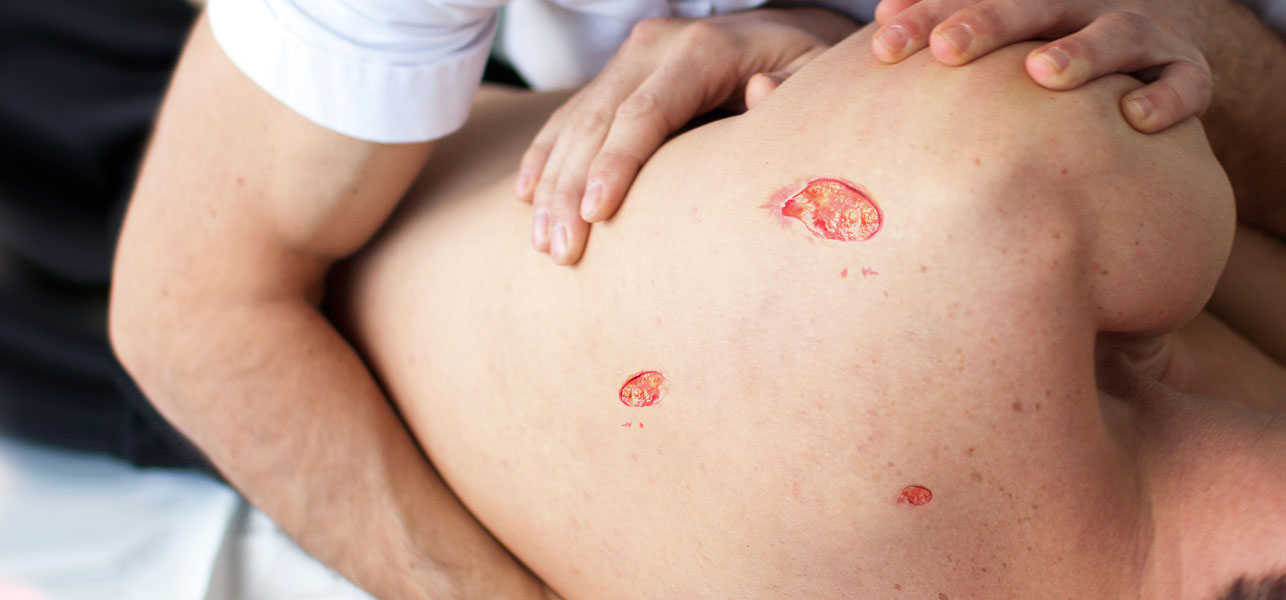Bedsores Causes, Symptoms, Diagnosis and Treatment

What Are Bedsores?
Bedsores, also known as bedsores, are localized injuries to the skin and/or underlying tissue that usually occur over a bony prominence as a result of pressure, or pressure in combination with shear and/or friction.
Although often prevented and treatable if detected early, bedsores can be very difficult to prevent in critically ill people, frail elders, wheelchair users and terminally ill individuals.
People most at risk of bedsores are those with a medical condition that limits their ability to change positions, requires them to use a wheelchair or confines them to a bed for a long time.
The rate of bedsores in hospital settings is high, but improvements are being made.
Complications Of Bedsores Include:
- Sepsis.
Sepsis occurs when bacteria enter the bloodstream through broken skin and spread throughout the body - Cellulitis.
Cellulitis can cause severe pain, redness and swelling. - Bone and joint infections.
Bone infections (osteomyelitis) may reduce the function of joints and limbs. - Cancer.
Another complication is the development of a type of squamous cell carcinoma that develops in chronic, nonhealing wounds (Marjolin ulcer).
Causes Of Bedsores:
Bedsores are caused by pressure against the skin that limits blood flow to the skin and nearby tissues.
Factors related to limited mobility can make the skin vulnerable to damage and contribute to the development of bedsores.
Major contributing factors include:
- Sustained pressure.
This kind of pressure tends to happen in areas that aren’t well-padded with muscle or fat and that lie over a bone, such as spine, tailbone, shoulder blades, hips, heels and elbows. - Friction.
The friction may be even greater if the skin is moist.
Friction may make fragile skin more vulnerable to injury. - Shear.
This motion may injure tissue and blood vessels, making the site more vulnerable to damage from sustained pressure.
Factors That Increase The Risk Of Bedsores Include:
- Age. The skin of older adults is generally more fragile, thinner, less elastic and drier than the skin of younger adults. Also, older adults usually produce new skin cells more slowly.
- Lack of sensory perception.
- Weight loss. The loss of fat and muscle results in less cushioning between bones and a bed or a wheelchair.
- Poor nutrition and hydration.
- Excess moisture or dryness.
- Bowel incontinence. Bacteria from fecal matter can cause serious local infections and lead to life-threatening infections affecting the whole body.
- Medical conditions affecting blood flow. Health problems that can affect blood flow, such as diabetes and vascular disease, increase the risk of tissue damage.
- Smoking. Smoking reduces blood flow and limits the amount of oxygen in the blood.
- Limited alertness.
- Muscle spasms.
Symptoms Of Bedsores:
Bedsores are grouped by their severity. Stage I is the earliest stage. Stage IV is the worst.
- Stage I: A reddened area on the skin that, when pressed, does not turn white. This is a sign that a bedsores is starting to develop.
- Stage II: The skin blisters or forms an open sore. The area around the sore may be red and irritated.
- Stage III: The skin now develops an open, sunken hole called a crater. There is damage to the tissue below the skin.
- Stage IV: The bedsores have become so deep that there is damage to the muscle and bone, and sometimes to tendons and joints.
Diagnosis Of Bedsores:
Bedsores are diagnosed via:
- Physical exam
- Blood tests to check one’s health
- Tissue cultures to diagnose a bacterial or fungal infection in a wound that doesn’t heal with treatment or is already at stage IV
- Tissue cultures to check for cancerous tissue in a chronic, non healing wound
Treatment Of Bedsores:
The following treatment options are available:
- Reducing pressure
Repositioning
Using support surface - Removing damaged tissue
Surgical debridement
Autolytic debridement
Mechanical debridement
Enzymatic debridement - Pain management
- Antibiotics
By : Natural Health News




